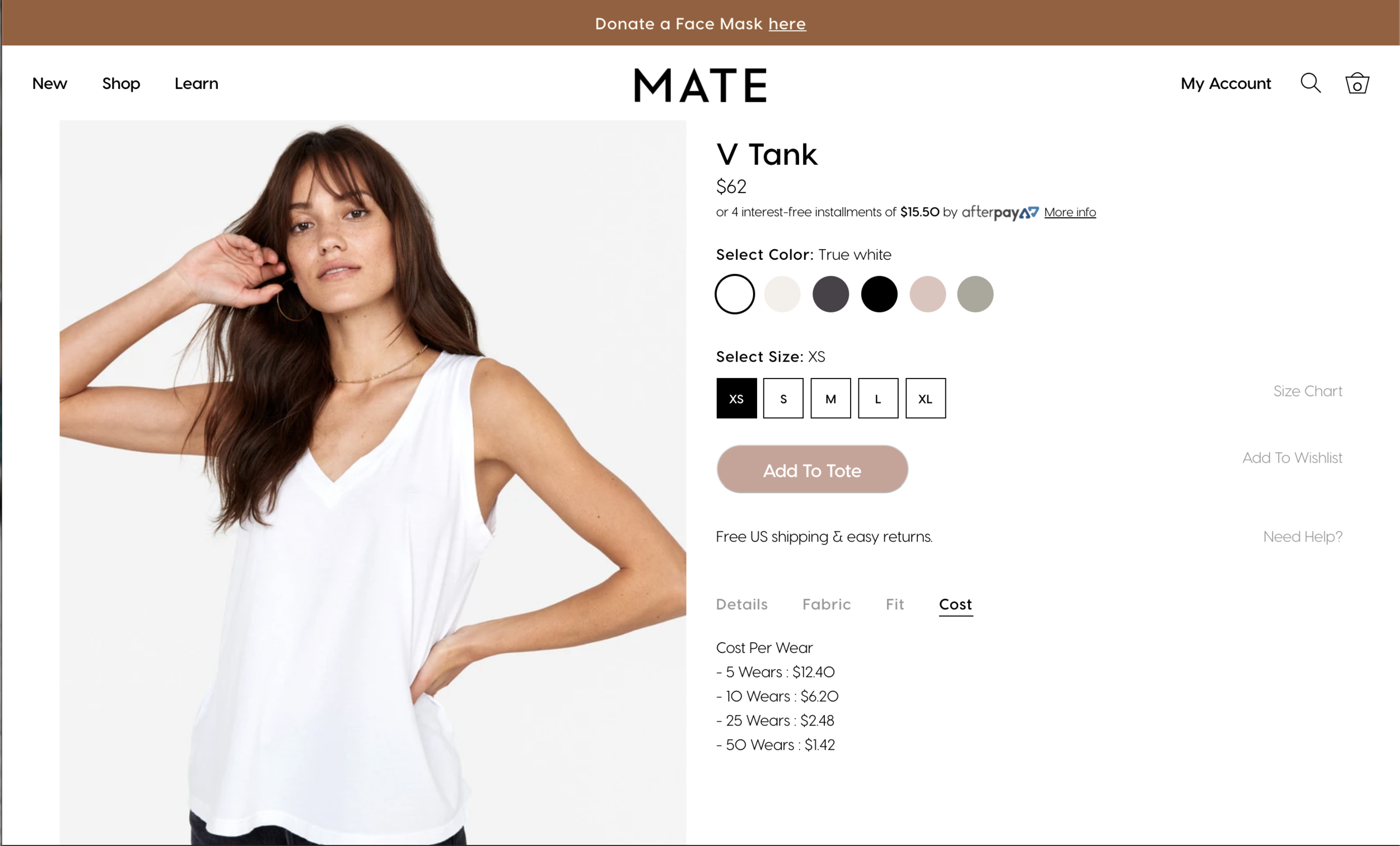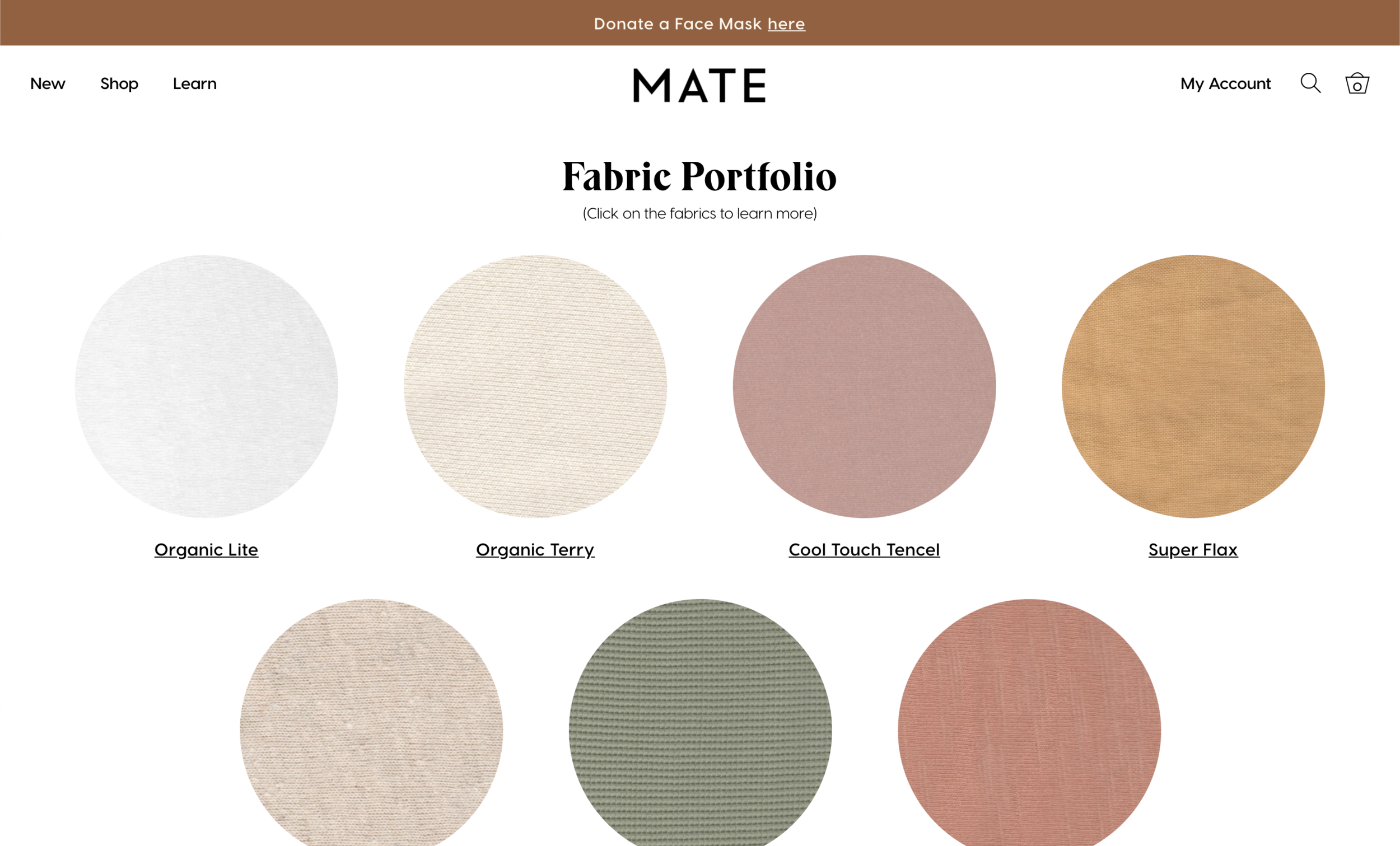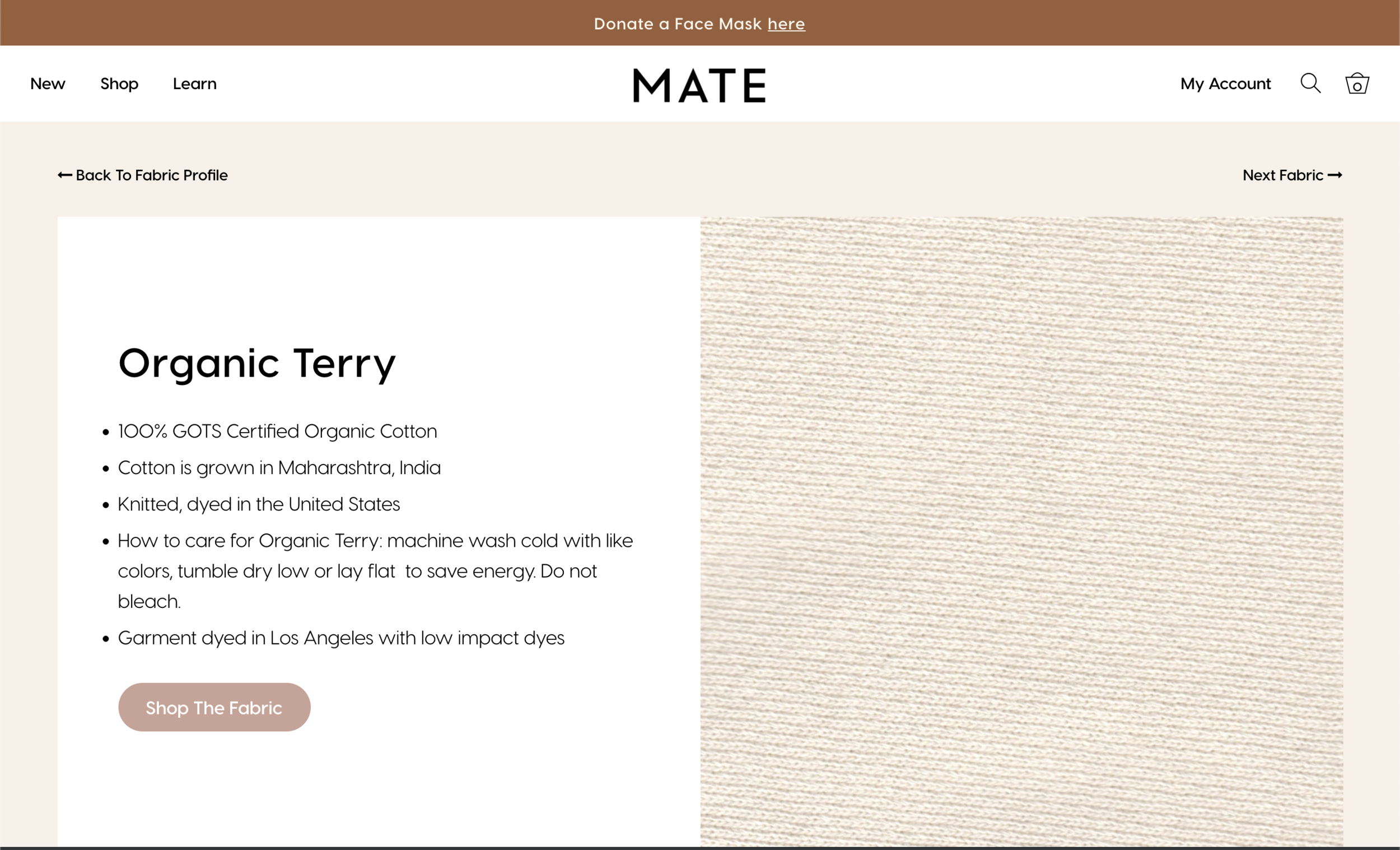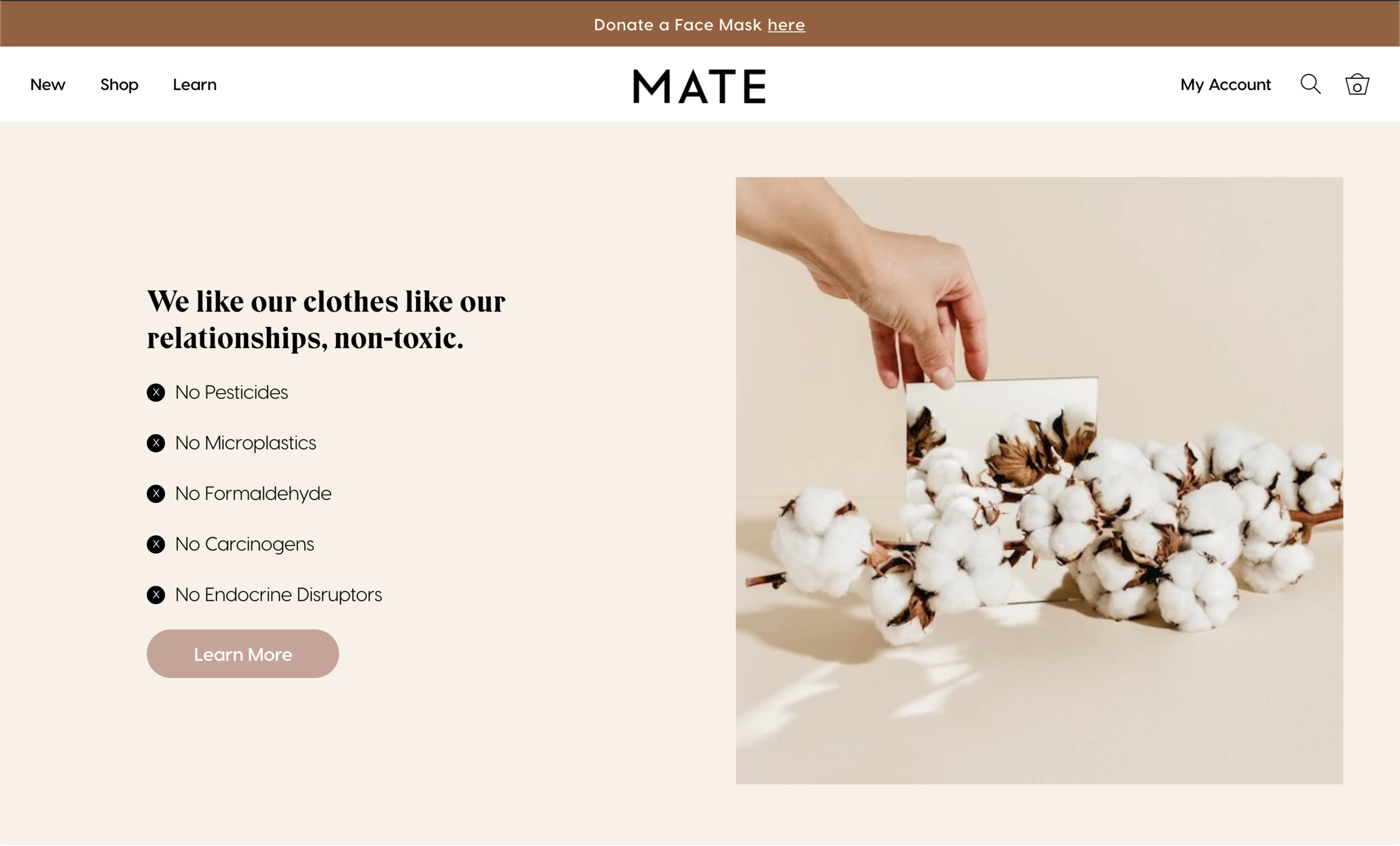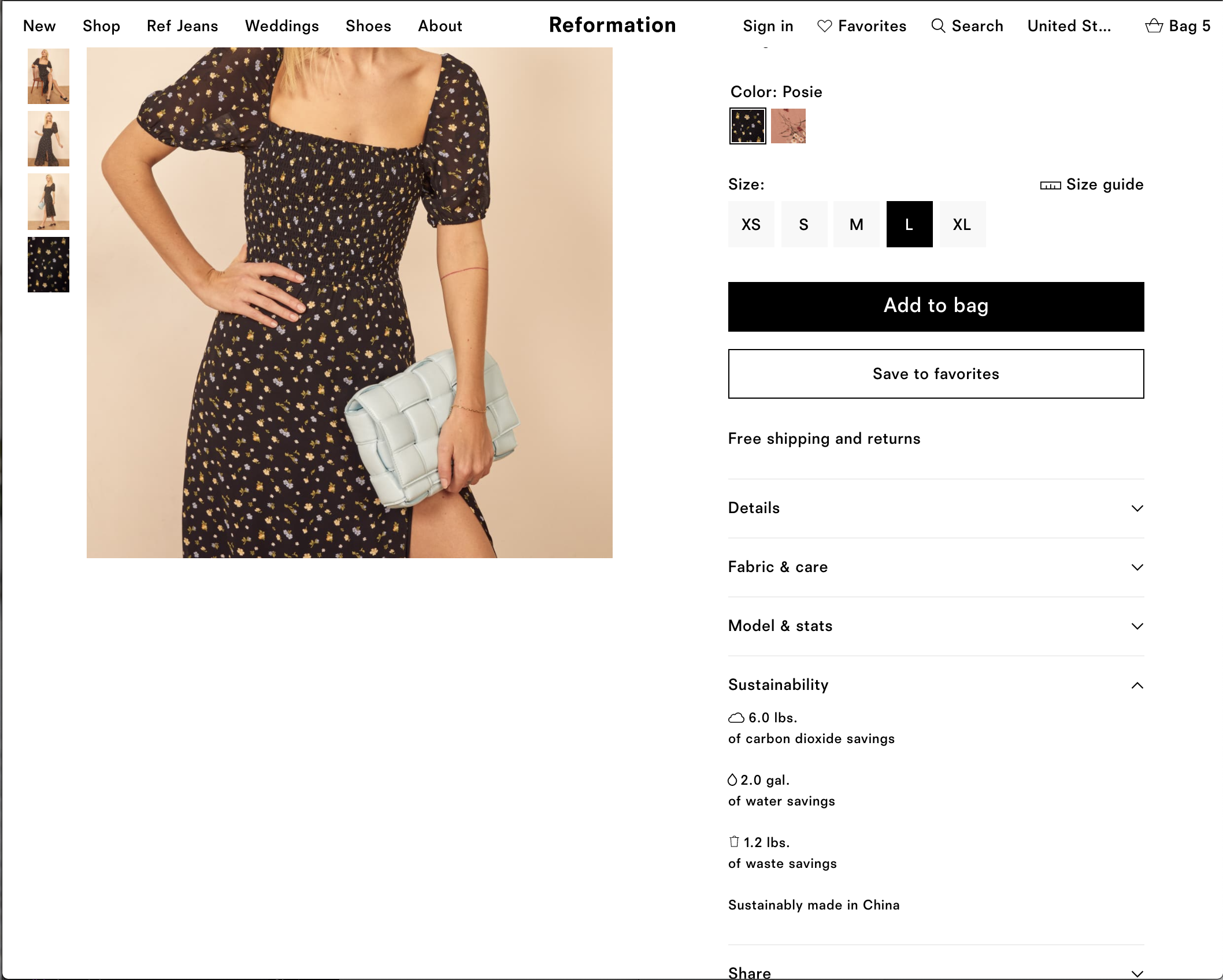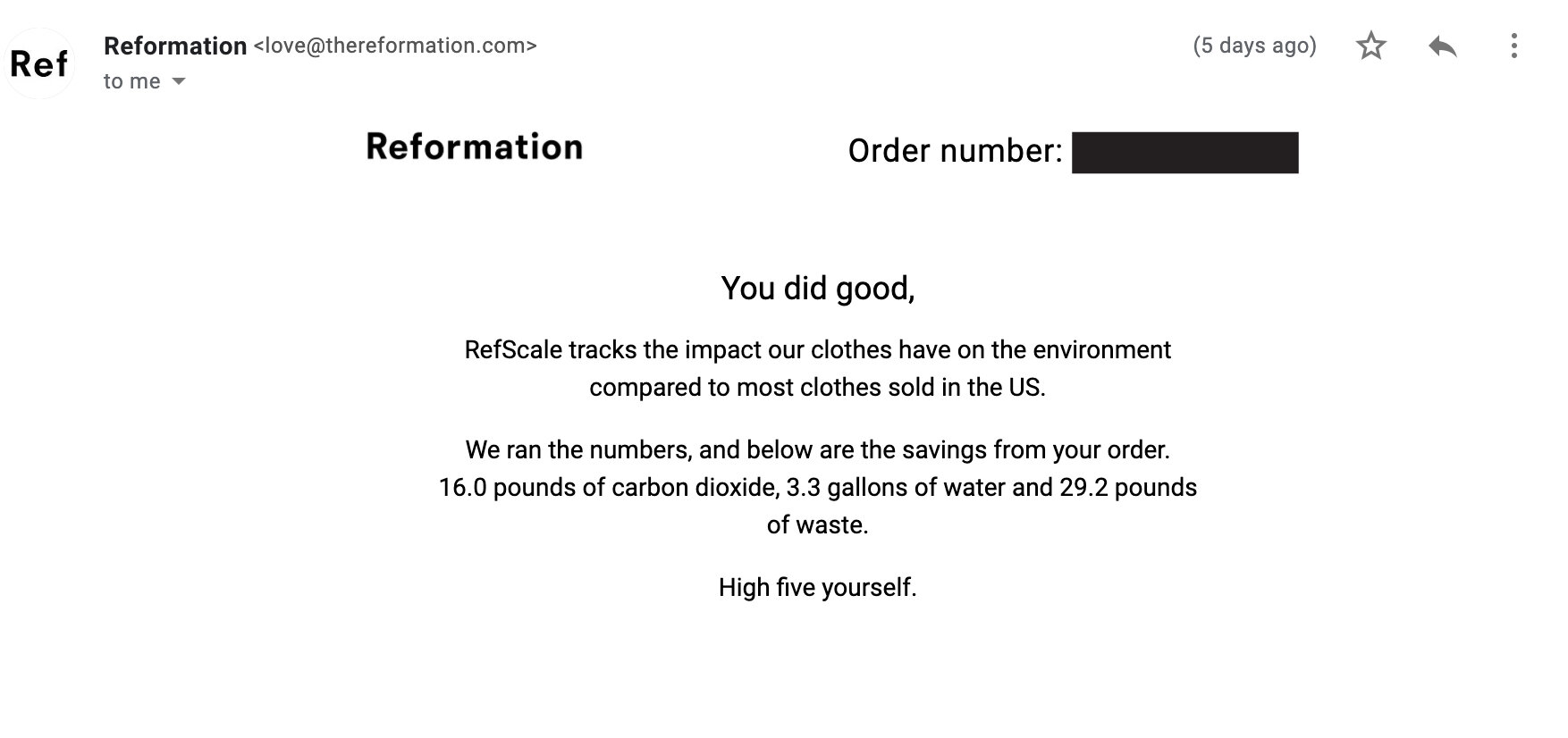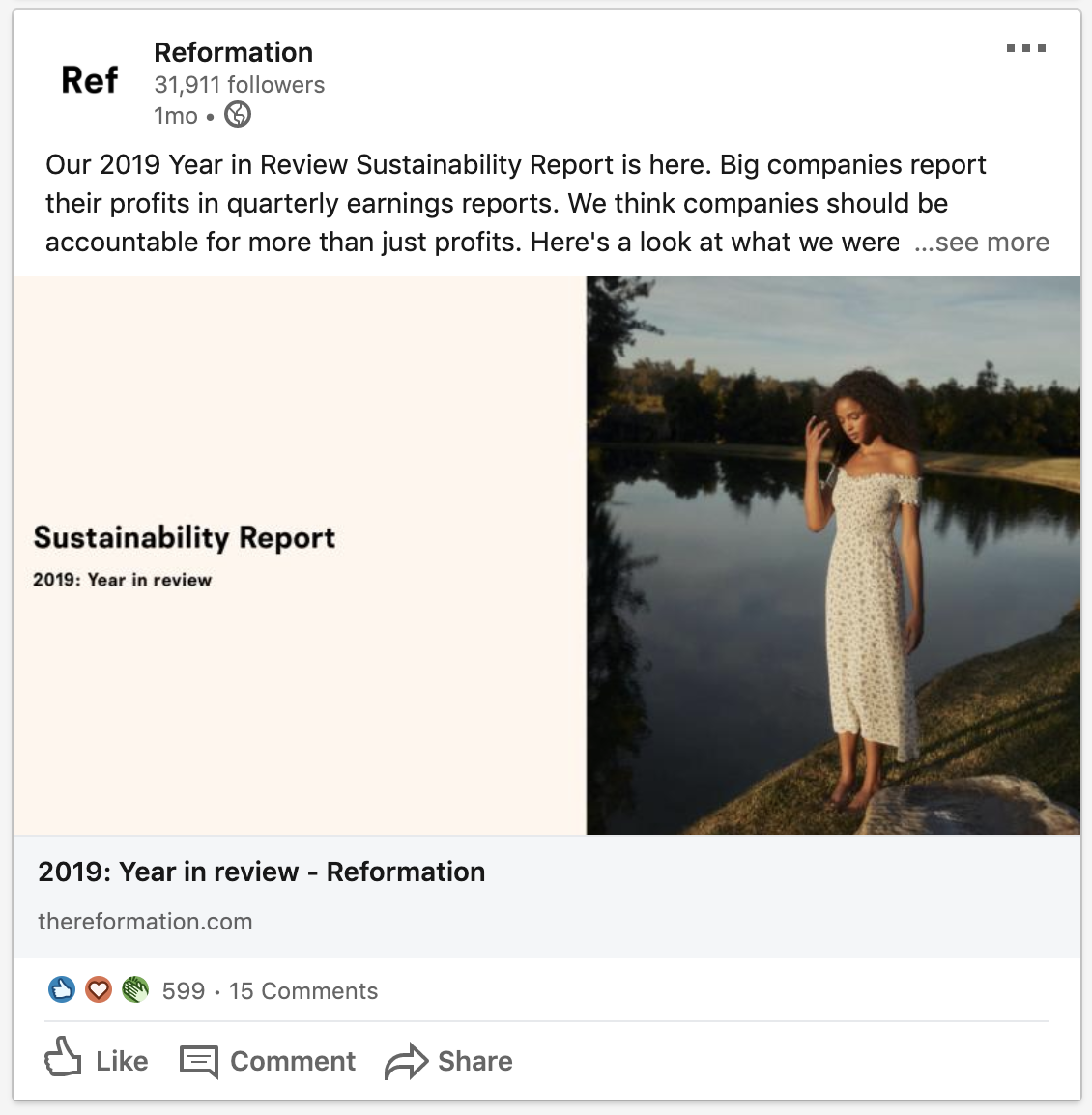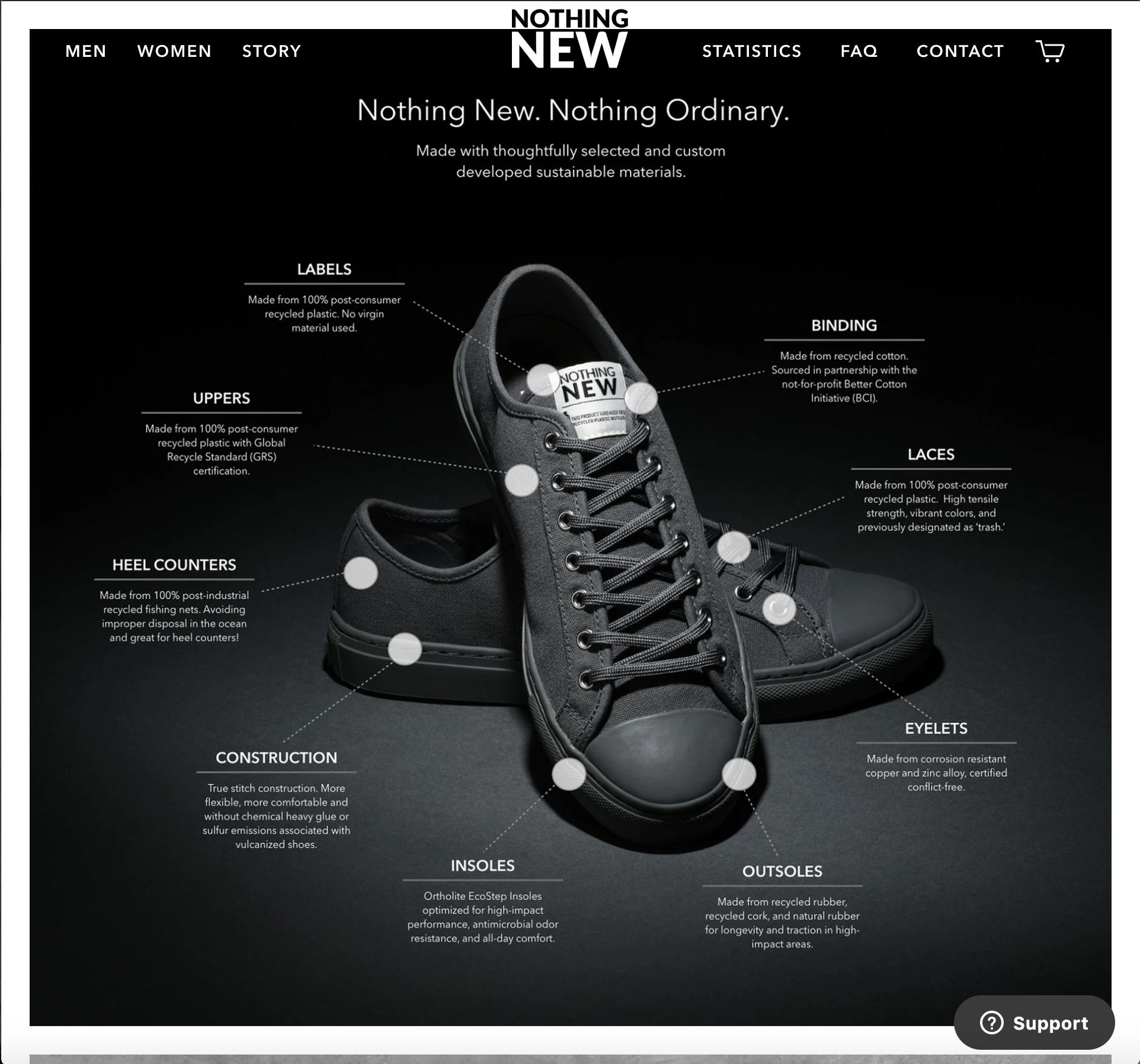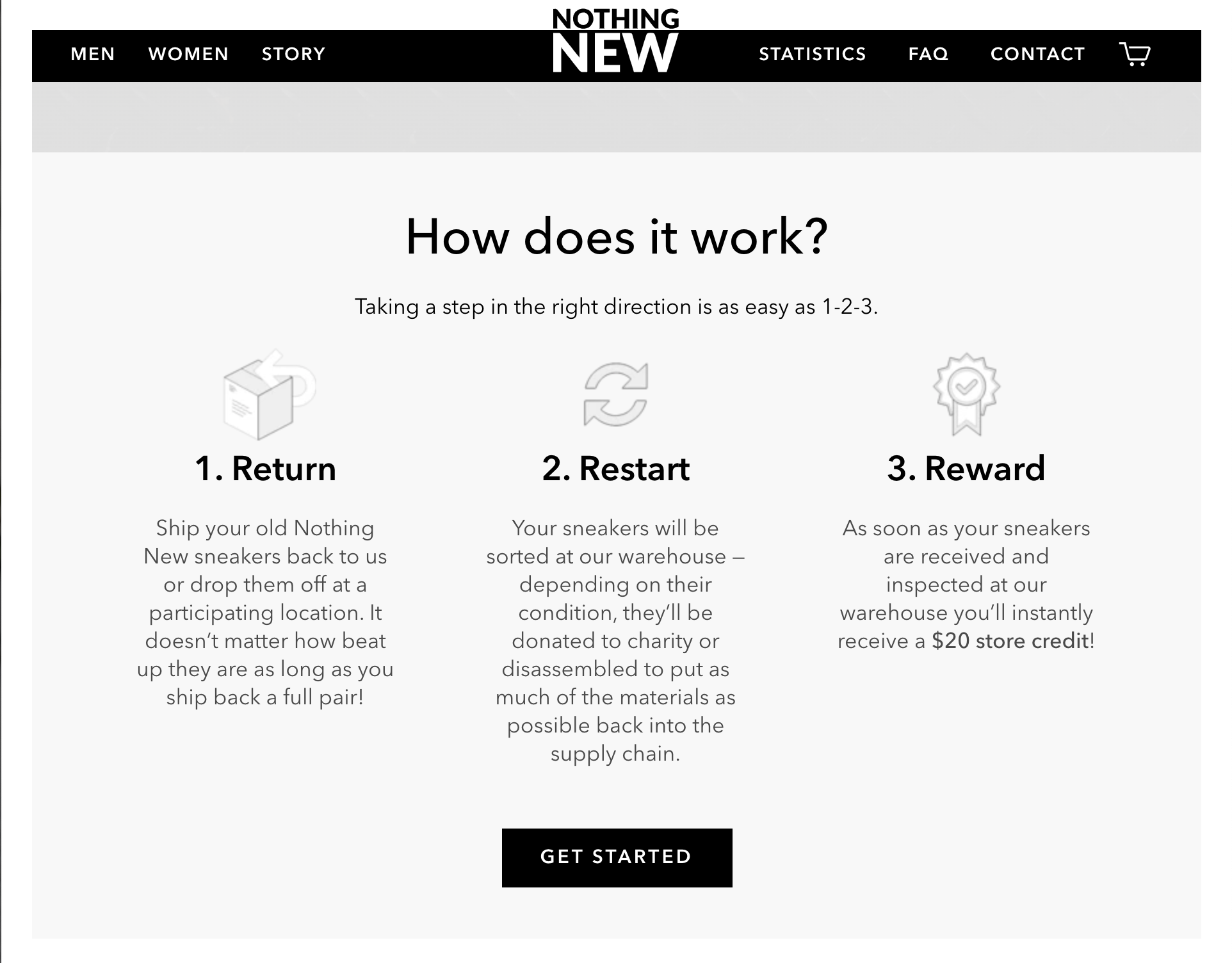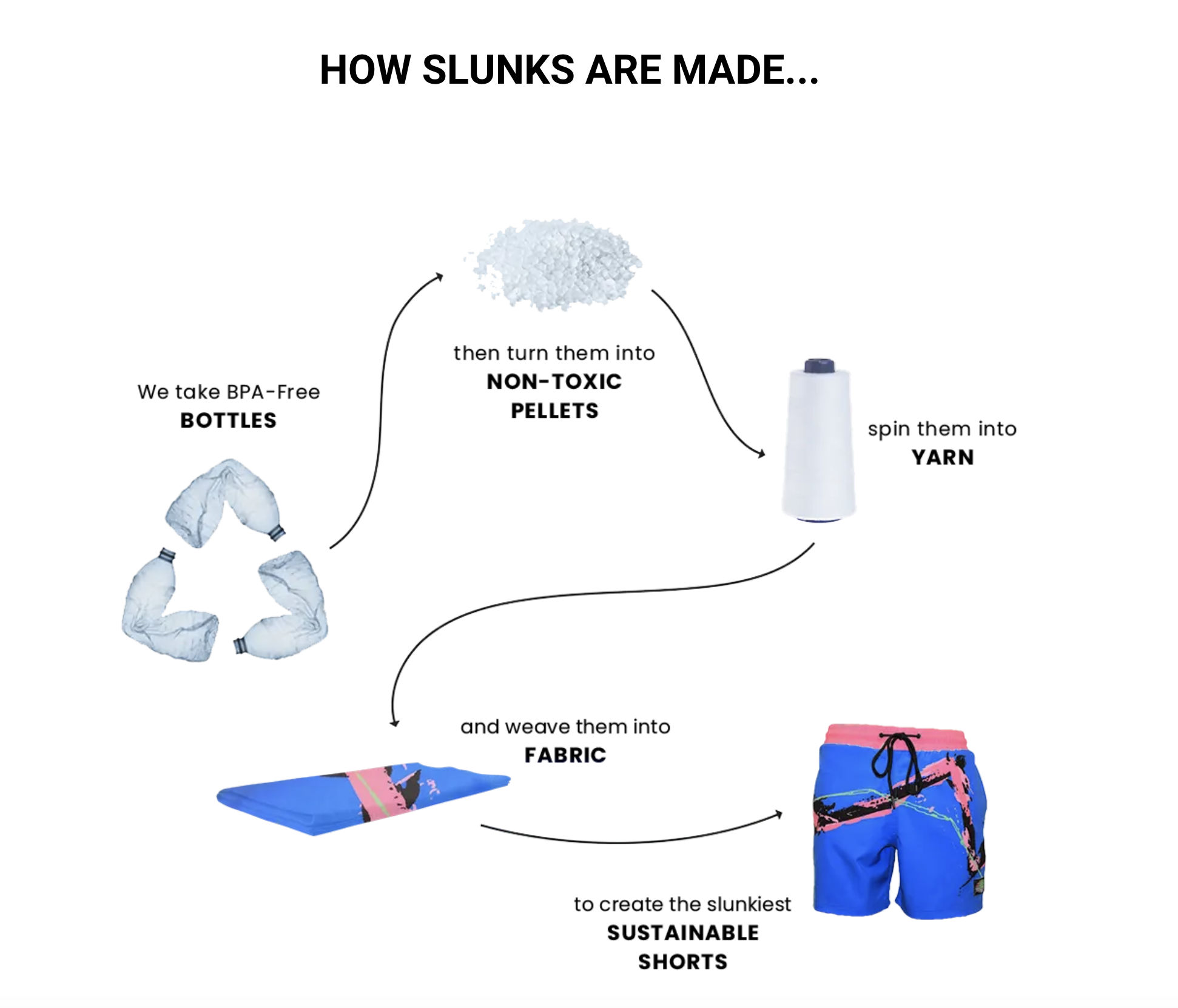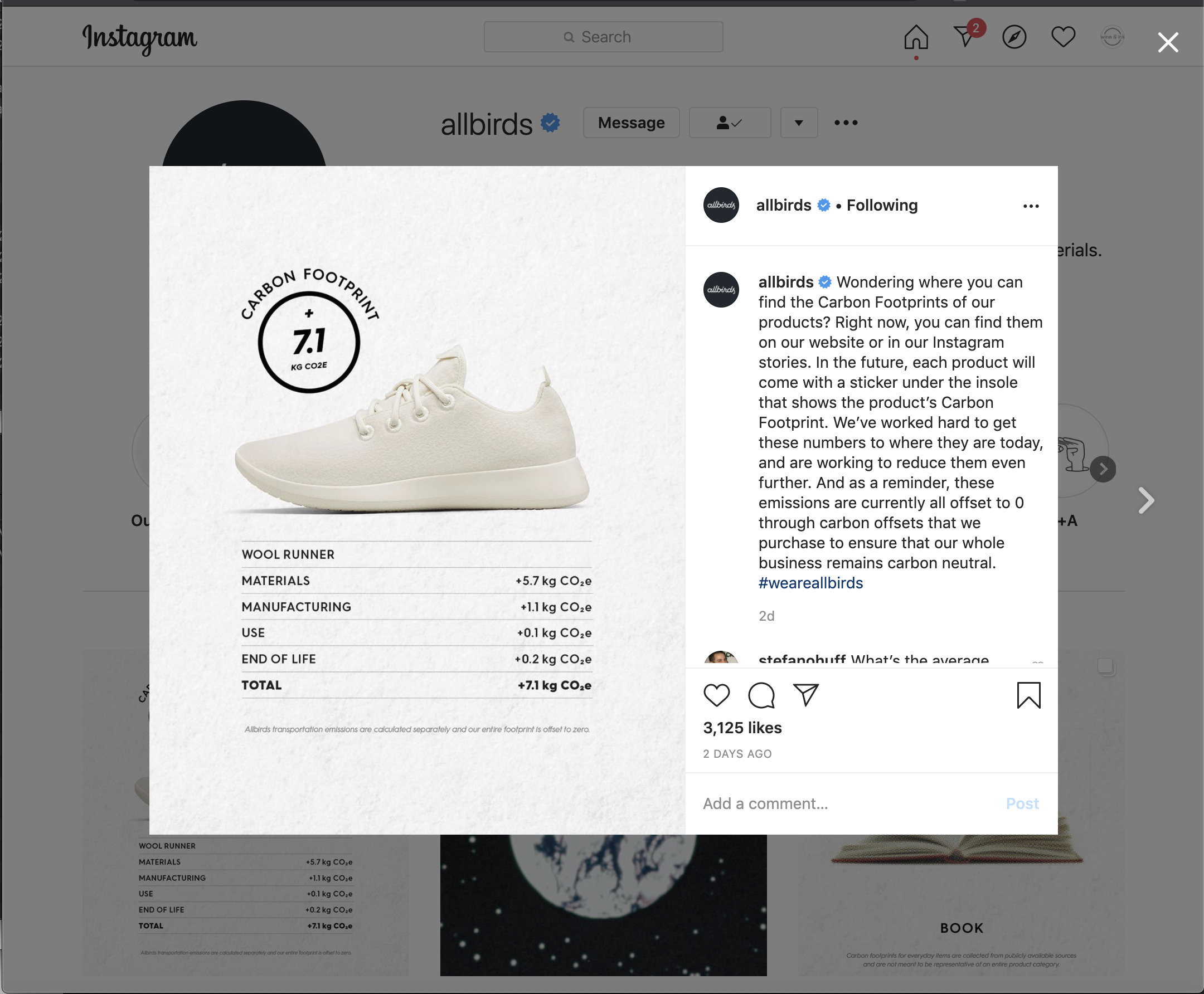The Menu
As you can see from the above, there are a lot of options and not a lot of consistency in how brands are approaching this issue. Is that a good or a bad thing? I think mostly, it points to how the Slow Fashion initiative could benefit from some structure.
Small business owners are stressed. That’s just a fact. It takes a lot to get a business up and running and even more to keep it going. So when survival is the goal, how to you allocate weight to sustainable practices that may cost a little more?
My suggestion would be to lessen the cognitive load, lower the barrier to entry, and hopefully make these practices less of a “premium service”. We are trying to save the planet and be good fellow humans here, so why am I paying extra to use less?! There are a lot of studies concerning exactly that but for now, let’s focus on the cognitive load issue. Below I have formulated a menu of sorts. It is separated out into three categories: what companies can do, what consumers (YOU) can do, and specific recommendations for SUAVS.
I hope that people use this to get the ball rolling in their own lives and start shopping/producing more consciously (don’t make me make you re-read the first section of this web page).
What Companies Can Do
The following list consists of a myriad of ways in which your company can improve its sustainability. Go forth and help our planet.
Communications
Clearly list the materials and resources used in a product and include how using that material is a more sustainable option.
Implement a filtering system to make it easier for consumers trying to shop ethically and/or sustainably.
Make education about the Fast Fashion issue and Slow Fashion solutions easier to digest by pulling out clear numbers and explaining any jargon in a concise way.
Illustrate sustainable practices with diagrams and representative iconography.
Make videos explaining your sustainable efforts or causes that are readily available and less than 3 minutes (people are more likely to consume bite-sized media).
Team up with other sustainable companies like Boxed Water. Every time a post features Boxed Water and the #betterplanet hashtag on Instagram, Boxed Water will plant two trees. https://boxedwaterisbetter.com/blogs/blog/better-for-our-planet-brief
Look into techniques that help online shoppers envision the product on themselves or the features of it.
Video of how clothing moves on a body helps people visualize how it would drape on themselves immensely more than a picture does.
Use models of different shapes, sizes, ethnicities, etc.
My personal plea to the industry, list out what kind of undergarments are usually required for an item. One step further would be including this as a filter option. Reasoning: for some people, certain undergarments are a no-go. If those people can’t tell whether say a top has a built in bra, they may buy something and end up never wearing it (human behavior).
Leverage augmented reality (AR) so they can see the item portrayed on themselves.
Realize the downfalls of mass sizing. Revolve does a great job with their sizing. They have a feature that translates what one size in a certain brand would be in a brand you are familiar with. For example, if you are a size 8 in a jean brand you are familiar with, you may be a size 6 in a jean brand that runs large. This cuts down on returns, possible waste, and unnecessary shipping/processing.
Check out MySizeID. A new service you can plug into your ecommerce site. https://www.mysizeid.com/?gclid=Cj0KCQjwy6T1BRDXARIsAIqCTXpXO7ph3y2w1e6yFnia2r9r1CGSh9ES3uurYeKQE3xkwMuX02aJPJkaAl1xEALw_wcB
Make sure the important measurements are listed. For example, inseam and rise on bottoms.
Educate your consumers on where to measure themselves with a diagram.
When concerning a shoe, show the shoe on a person. People are notoriously bad at precise visualization (it’s a practiced skill with a high cognitive demand). So with shoes, people have reported difficulty discerning things like where the top of the shoe would be on them.
Highlight your company’s sustainable efforts in your primary navigation.
Break out “cost per wear” if possible. - Mate the Label
Back up your buzzwords with statistics.
Profile the specific fabrics your brand uses if possible. What they are made of, where they come from, how they are colored, etc.
Materials & Packaging
If you want to use cotton, use Global Organic Textile Standard (GOTS) certified organic cotton.
If you want to use paper goods, use Forest Stewardship Council (FSC) certified paper goods. – https://www.rei.com/learn/expert-advice/what-is-fsc-certification-and-why-you-should-look-for-it.html
Use bluesign® certified suppliers, manufacturers, and textiles. A bluesign® certification means that the supplier, manufacturer, or resource meets certain ecological and traceability standards (concerning things like wastewater and carbon emissions) – https://www.bluesign.com/en
Research and implement more sustainable packaging solutions. Stay away from foam peanuts, plastic, and use less paper resources.
Look at ways to improve your sample process. Creating fewer full samples results in less materials being used and less shipping required.
If possible, find a way to use recycled materials for anything from the paper for packing slips to the tag on a garment.
Find a donation or up-cycle solution for damaged or returned goods. The following list is sourced directly from https://trashisfortossers.com/how-to-recycle-old-clothing/. –
Wearable Collections: NYC-based clothing recycling pick up service.
Secondary Materials and Recycled Textiles: An online platform that will help you find the nearest textile recycling outlets near you.
H&M, Don’t Let Fashion Go To Waste – You can drop off your textiles from any brand, in any condition, at any H&M store globally and they’ll recycle it for you. I recommend calling ahead though to your local H&M before to double check and make sure store employees know you’re coming by.
Donation Town: A site that helps you find a local clothing donation pick-up service in your area.
Nike, Reuse-A-Shoe: Nike collects old athletic shoes from any brand that they grind up and use to create courts, fields, tracks and playgrounds.
Patagonia, Common Threads – Bring back your unwanted Patagonia clothing and accessories to any Patagonia store and they’ll recycle it and give you store credit!
The North Face, Clothes the Loop – Recycling clothing and shoes from any brand at North Face stores.
Certifications & Accountability Partners
Team up with the Fair Trade Program to ensure your company employs ethical social and environmental resources – https://www.fairtradecertified.org/business
Become a certified B Corporation. A B Corporation certification requires your company to meet “the highest standards of verified social and environmental performance, public transparency, and legal accountability to balance profit and purpose.” – https://bcorporation.net/certification/meet-the-requirements
Partner with the Fair Labor Association to promote and support social responsibility. – https://www.fairlabor.org/
Corporate Governance
Establish an internal sustainability advisory board to keep a pulse on your company’s sustainability and initiate improvements.
Have yearly audits of your progress.
Publish those reports for transparency and as a way to hold you and your company accountable. People understand companies aren’t perfect, but showing initiative and trying to be better goes a long way in building customer support/relationships.
Communicate your sustainable goals publicly.
Hold more than your factories and warehouses accountable. Monitor the waste and resources used at your office and any retail locations and then work to be greener.
Supply Chain Traceability
Automate your production process as much as possible to limit the resources required, including energy. – https://classic.qz.com/perfect-company-2/1145012/a-german-company-built-a-speedfactory-to-produce-sneakers-in-the-most-efficient-way/
If possible, manufacture locally. Put money back into the communities you are profiting from.
Product Environmental Footprint
Monitor technological advances for ways to improve your production cycle.
Leverage digital printing with sustainable filaments.
Use digital knitting to create less textile waste.
Employ micro-sizes to ensure a better fit for your customers and therefore a lower likelihood of waste/returns.
Trace and log all chemicals used in your production process. Find sustainable alternatives.
Use natural dyeing processes. – https://www.researchgate.net/search.Search.html?type=publication&query=natural%20dyes%20textiles
Use sustainable printing processes.
Require transparency from your factory partners and only partner with those who are working towards sustainability. If possible, supply them with the tools and training to leverage more sustainable methods (this may make sense for some companies and not others).
Climate Action
Become a carbon neutral company. Or even better, become a zero carbon emissions company
Use solar panels where applicable.
Find areas where you can reduce transportation (shipping, team travel, storage centers, etc.).
Use ingredients for anything your company produces that aren’t harmful to produce, use, or dispose of.
Community & Giving
Join 1% for the Planet. – 1% for the Planet consists of both businesses and individuals who donate 1% of their annual proceeds to environmental nonprofits (chosen and regulated by the organization) – https://www.onepercentfortheplanet.org
Support and advocate for other businesses trying to make a sustainable difference. An example of the opposite: Nike sued Adidas for releasing their first digitally knitted shoe on the heels of Nike’s. https://www.fastcompany.com/3027386/the-race-to-create-knitted-shoes-that-cut-the-wastefulness-of-our-footwear
